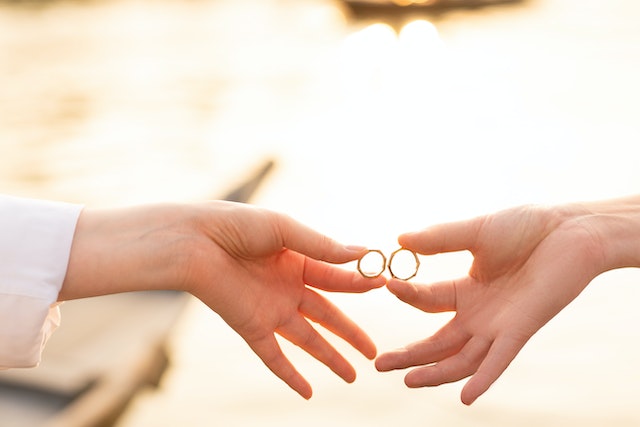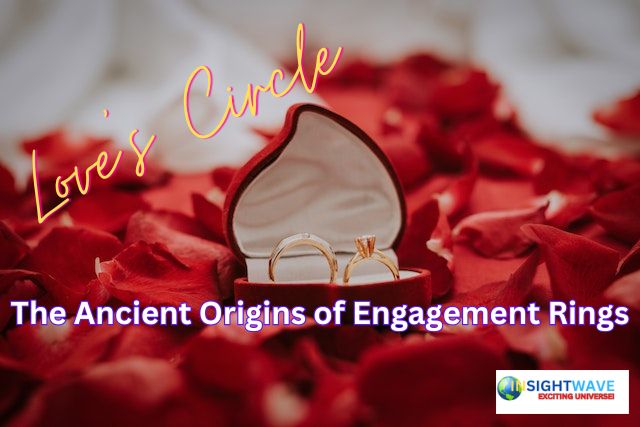In today’s world, the giving of an engagement ring is a symbol of love, commitment, and the promise of a lifetime together. This cherished tradition has deep historical roots, tracing back to ancient Rome, where engagement rings, though quite different from the dazzling diamonds we associate with them today, held a special place in the hearts of couples.
The tradition of giving engagement rings, like many customs, has evolved over time. Its roots can be traced back to ancient Rome, where the act of betrothal, or the formal promise of marriage, was symbolized by the exchange of a simple yet meaningful token: a ring.
In the early days of this tradition, engagement rings were far from the glittering gems we envision today. Instead, they were crafted from materials readily available in ancient Rome, such as leather or woven grass. These rings symbolized a promise and a commitment, rather than an ostentatious display of wealth. Love and devotion were at the core of the gesture, just as they are today.
Also Read : Dance of Love: Unveiling the Intriguing Mating Rituals of Seahorses
The circular shape of the ring held profound significance for the Romans. It symbolized eternity and the unending nature of love. The hole in the center of the ring carried its own symbolism, representing a door or gateway. This gateway was believed to lead to the future, where the couple’s life together would unfold.
As time went on, the tradition of exchanging rings continued to evolve. The materials used for engagement rings became more diverse, including iron, gold, and other metals. The significance of the ring as a symbol of commitment persisted, and the practice of wearing it on the third finger of the left hand, known as the “ring finger,” endured.
The Romans were not alone in their use of rings to symbolize betrothal. In ancient Egypt, rings made of braided hemp or leather were exchanged between couples to represent their promise of marriage. The circle, once again, was emblematic of eternity, and the exchange of these rings was a deeply meaningful gesture of love and dedication.

During the Middle Ages, the tradition of engagement rings gained further momentum in Europe. Rings began to feature more intricate designs, and gemstones, such as diamonds and sapphires, made their debut as symbols of wealth and prestige. The concept of “posy rings” also emerged during this time, with engraved inscriptions of love poems and messages hidden within the ring’s band.
The engagement ring tradition continued to evolve, taking on regional and cultural nuances. In some cultures, rings were exchanged at the time of betrothal, while in others, they were given during the wedding ceremony itself. The diamond engagement ring, which has become synonymous with proposals in many Western cultures, gained popularity during the 20th century, largely thanks to a successful marketing campaign by the De Beers diamond company.
Today, engagement rings come in a stunning array of designs and styles, from classic solitaires to elaborate settings adorned with a myriad of precious gems. The tradition has transcended borders and cultures, with couples worldwide embracing the practice of giving and wearing engagement rings as a symbol of their love and commitment.
Also Read : Virat Kohli: The Cricket Sensation and True Humanitarian
While the materials and designs of engagement rings have evolved dramatically over the centuries, the core sentiment behind them remains constant: love, commitment, and the promise of a shared future. The ancient Romans may not have envisioned the dazzling diamonds and precious metals that adorn engagement rings today, but their legacy lives on in every ring exchanged by couples embarking on the journey of marriage.
In a world that often seems to change at an ever-accelerating pace, the tradition of giving engagement rings serves as a poignant reminder of the enduring power of love and the timeless nature of human connection. As couples continue to exchange these meaningful symbols, they uphold a tradition that spans millennia, celebrating the unbroken circle of love that connects us to our past and guides us into the future.


